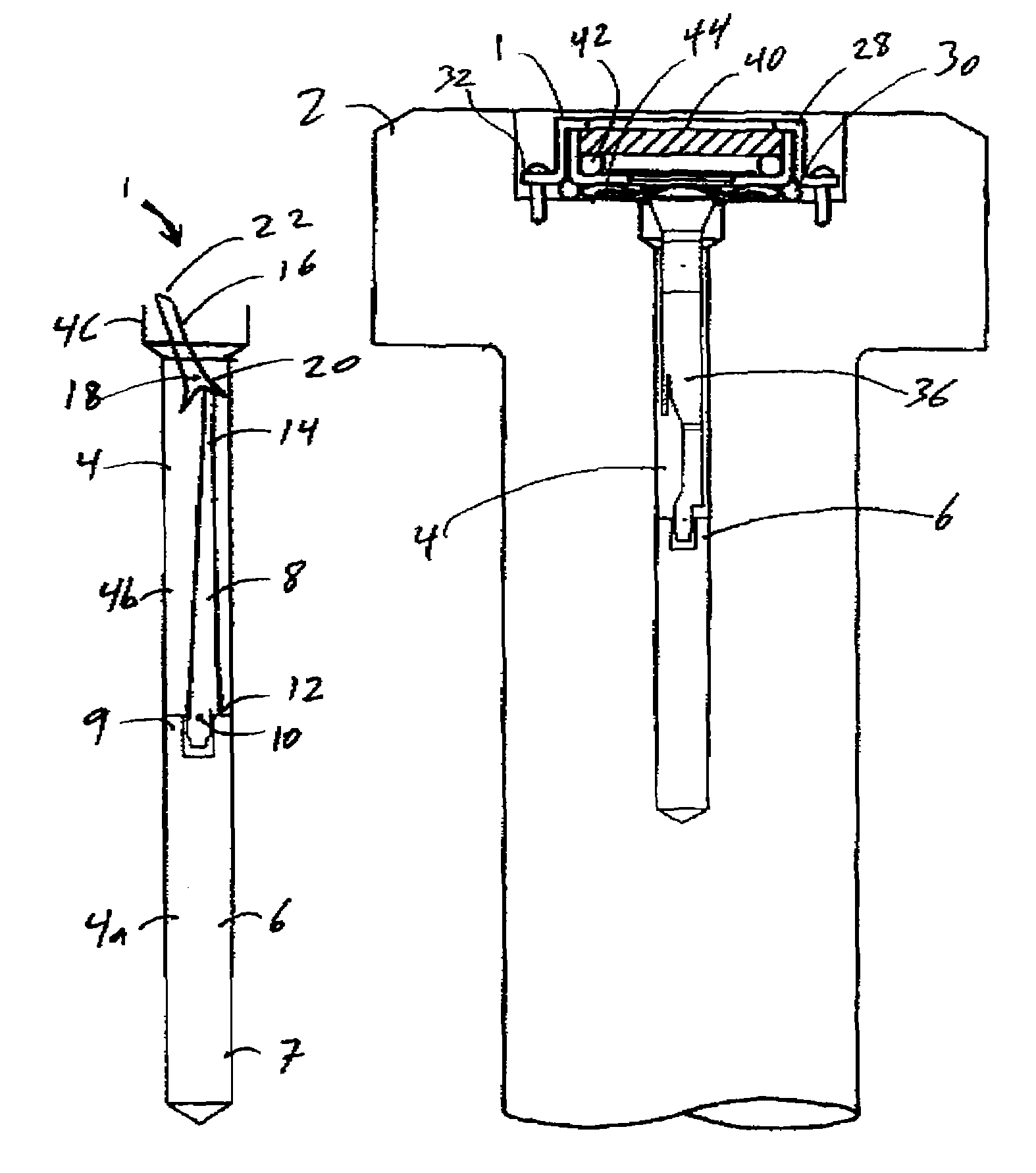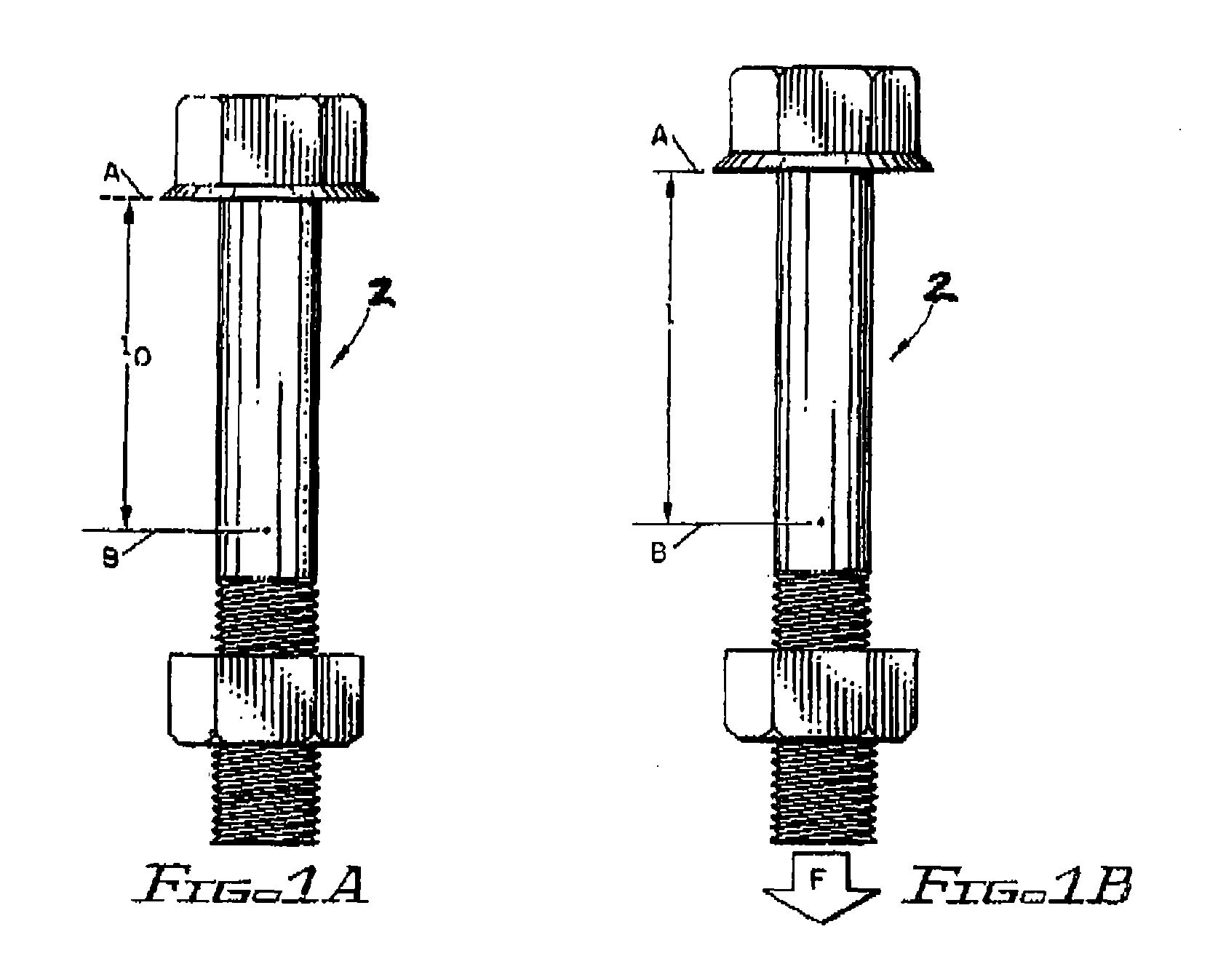Method and apparatus for indicating a load
a technology of load indicator and fastener, which is applied in the direction of measuring torque/twisting force while tightening, fastening means, instruments, etc., can solve the problems of increasing the maximum break point of the load indicator, reducing the degree of clearance required, and achieving the proper tightness of the fastener (tension) and maintaining this tightness once the system is placed in service. , to achieve the effect of reducing the range of movement and reducing the degree of clearan
- Summary
- Abstract
- Description
- Claims
- Application Information
AI Technical Summary
Benefits of technology
Problems solved by technology
Method used
Image
Examples
Embodiment Construction
[0028]The following description is of exemplary embodiments of the invention only, and is not intended to limit the scope, applicability or configuration of the invention. Rather, the following description is intended to provide a convenient illustration for implementing various embodiments of the invention. As will become apparent, various changes may be made in the function and arrangement of the elements described in these embodiments without departing from the scope of the invention as set forth herein. It should be appreciated that the description herein may be adapted to be employed with alternatively configured devices having different shapes, components, and the like and still fall within the scope of the present invention. Thus, the detailed description herein is presented for purposes of illustration only and not of limitation.
[0029]In accordance with various aspects of the present invention, a fastener includes a central bore for receiving a load indicating assembly or “c...
PUM
 Login to View More
Login to View More Abstract
Description
Claims
Application Information
 Login to View More
Login to View More - R&D
- Intellectual Property
- Life Sciences
- Materials
- Tech Scout
- Unparalleled Data Quality
- Higher Quality Content
- 60% Fewer Hallucinations
Browse by: Latest US Patents, China's latest patents, Technical Efficacy Thesaurus, Application Domain, Technology Topic, Popular Technical Reports.
© 2025 PatSnap. All rights reserved.Legal|Privacy policy|Modern Slavery Act Transparency Statement|Sitemap|About US| Contact US: help@patsnap.com



